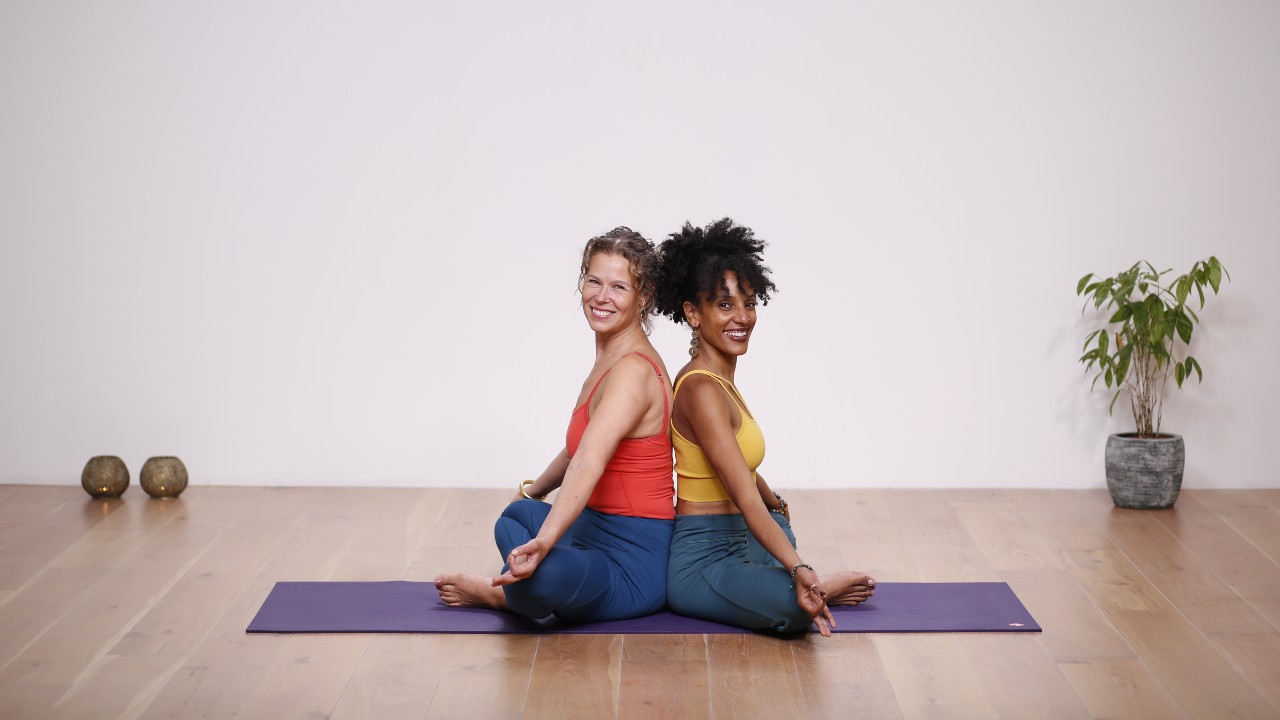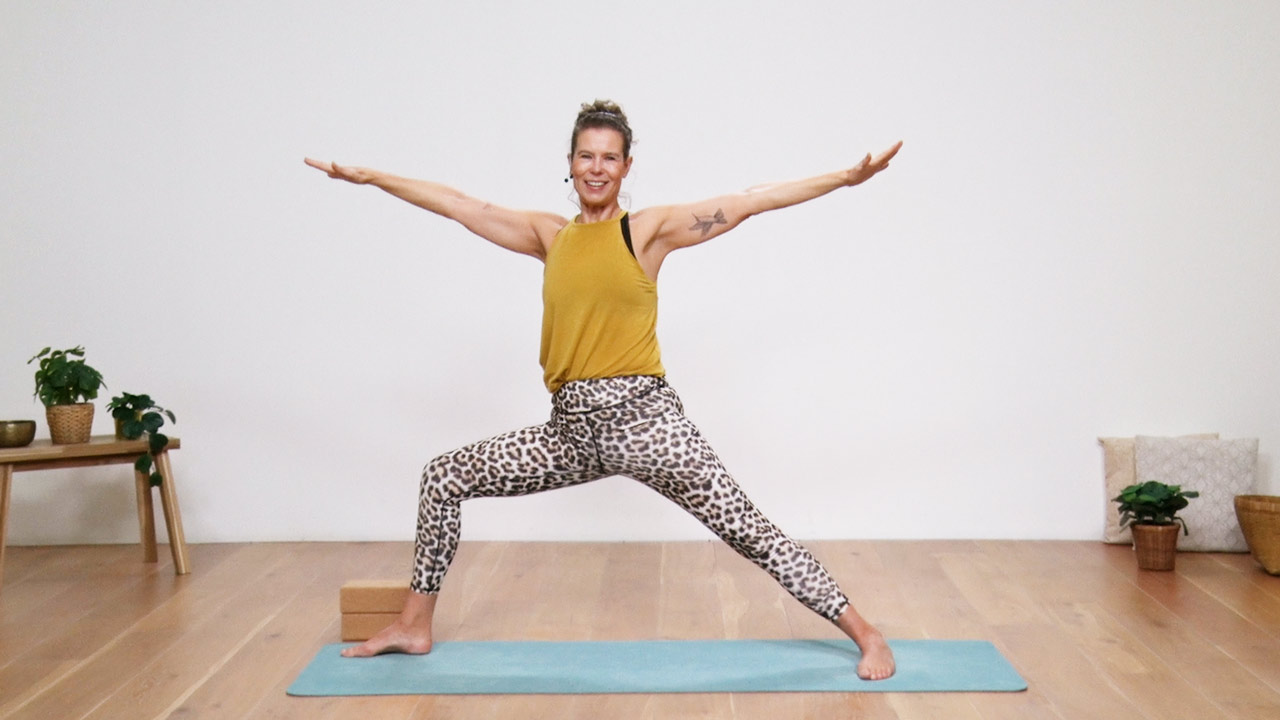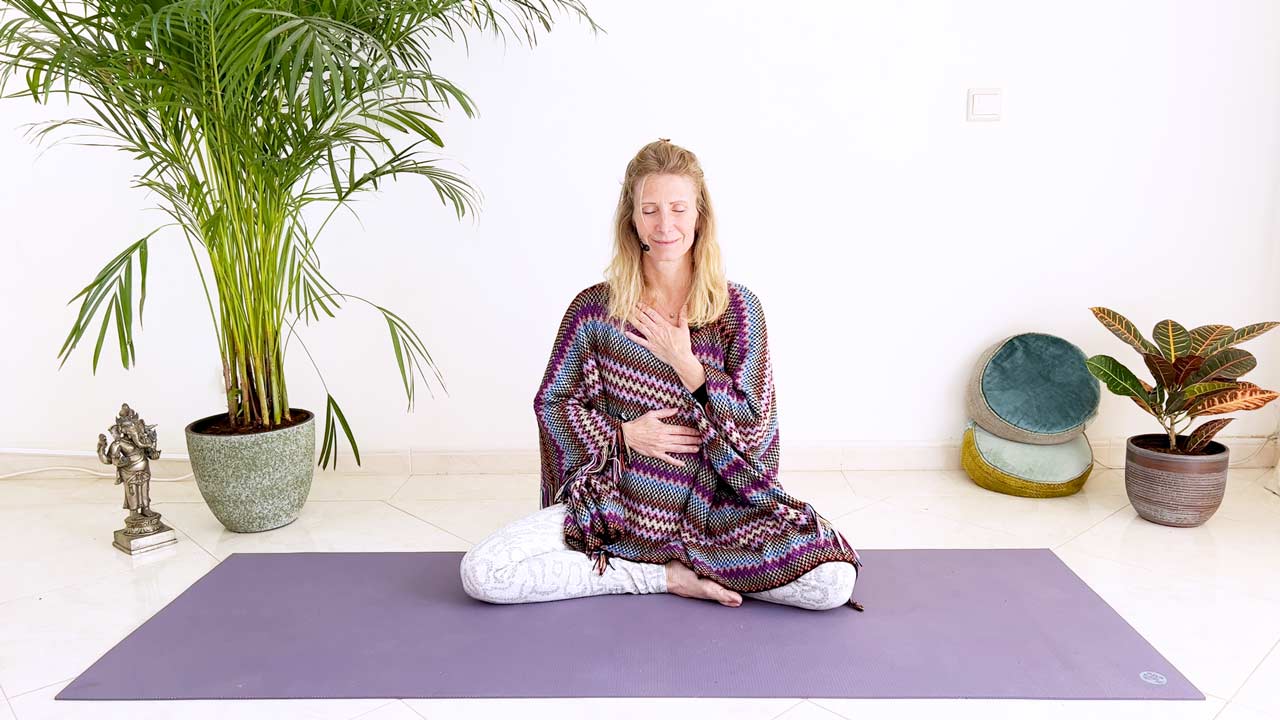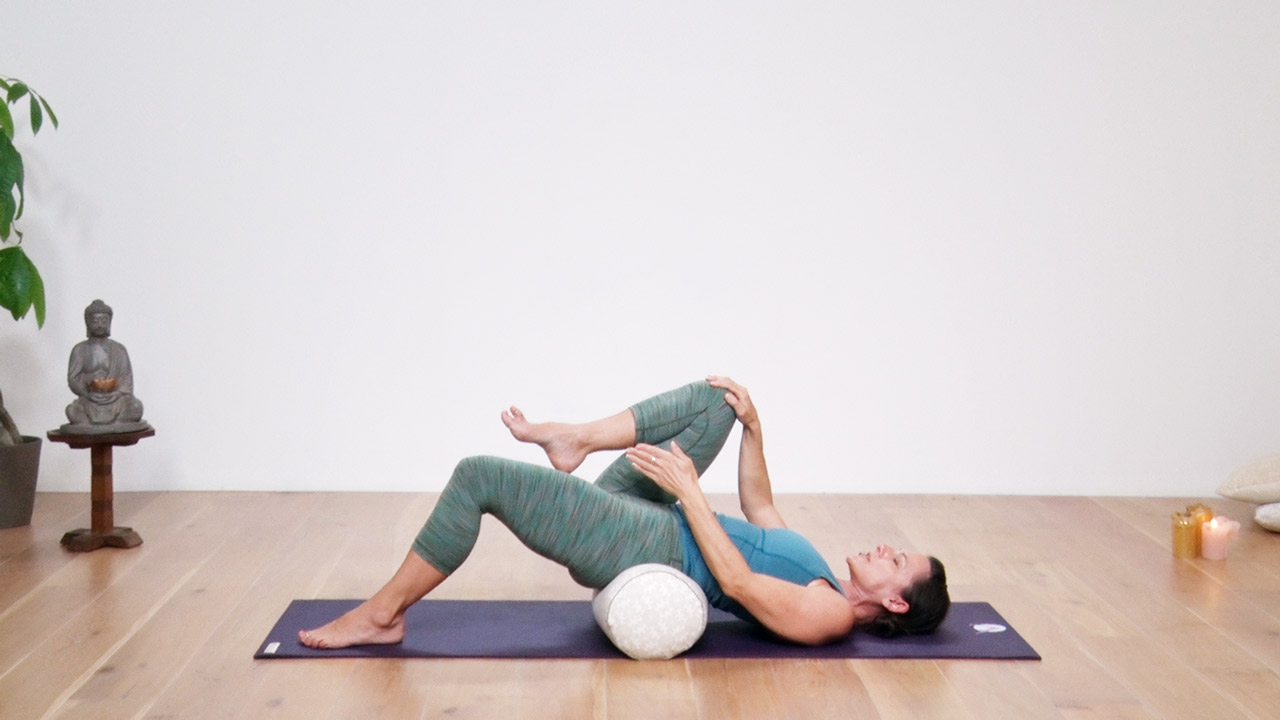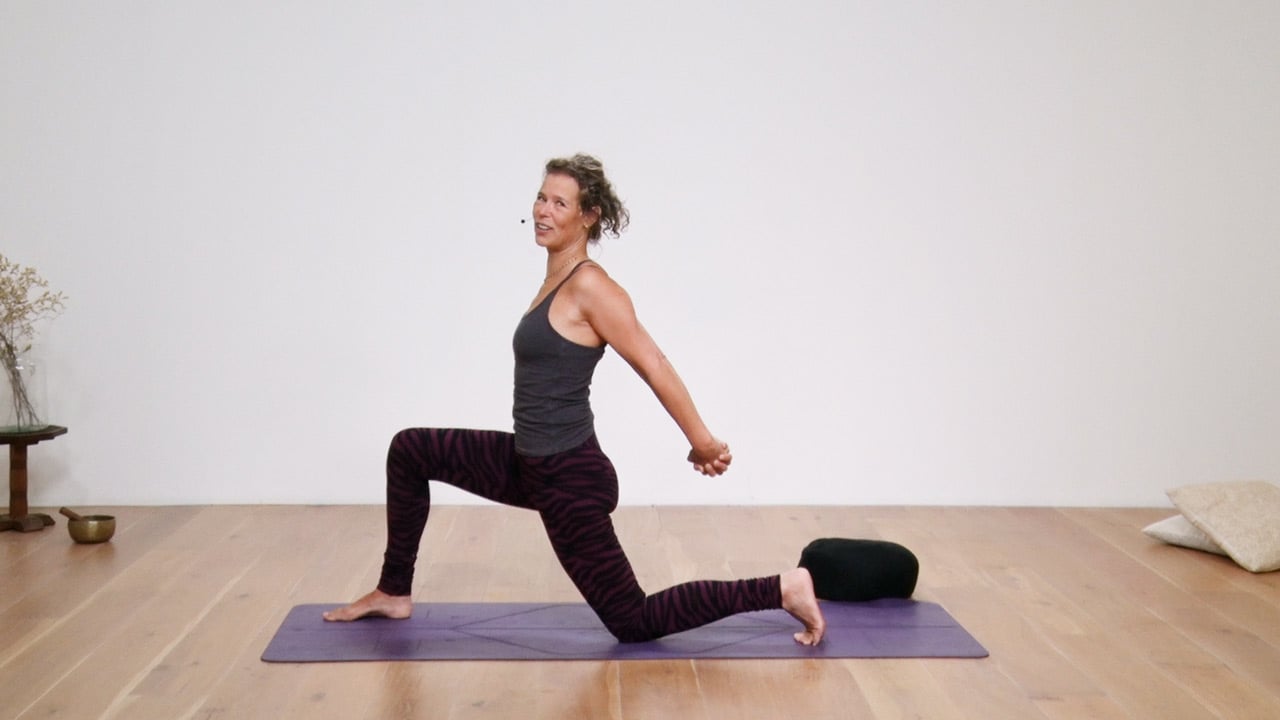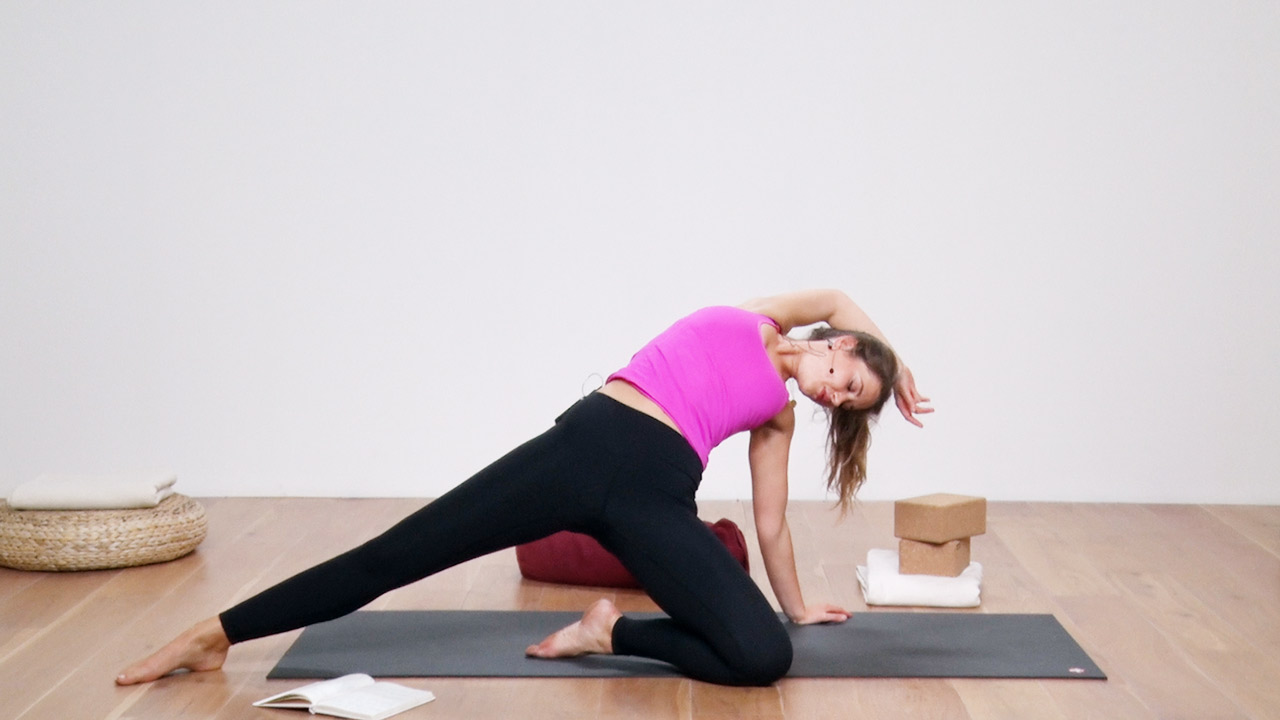It may not be so obvious, but what you do on your yoga mat can help you gain insight into your relationships. Your yoga practice will most likely include conscious breathing, mindful action, and an awareness of your inner state. Although these aspects and tools of yoga may not seem to extend far beyond your solo experience, they can give you information about and a ‘practice’ for your relationships too. Here’s how:
1. Yoga teaches you about boundaries
In yoga we practice expanding and stretching ourselves into new territory, whether that be lengthening our breath, our hamstrings or our mind’s ability to stay spacious. We practice that limits are a good thing too; we can only safely stretch so far.
Being aware – let alone honouring – our boundaries, is not what comes naturally for many people. We are taught that self-sacrifice is a virtue and to take good care of ourselves is selfish, so protecting our boundaries is not always appreciated by people around us.
But if we ignore our boundaries in our yoga practice, we may overstretch and even injure ourselves. That same disregard for our boundaries off the mat will overstretch our energy expenditure too, and can lead us to feeling resentful and burnt out. Saying ‘no’ with love lets our loved ones know where our limit is and that we can be trusted to speak up for ourselves. That way our ‘yes’ will come from that same place of truth and create a strong bond of dependability and self-responsibility that is so healthy for our relationships.
Be a boundary boss!
In this class you will practice limitation and boundaries in your body using muscle activation. Making your legs and arms strong and powerful limits your capacity to stretch. Although we don’t want rigidity in our bodies, hearts and minds, having strong and clear boundaries is what makes us healthy humans!
2. Yoga teaches you to be with what is
Some yoga philosophies (like tantra and Advaita Vedanta) are founded on the concept of non-duality and their teachings are often used in yoga classes. From a non-dual perspective opposites are ultimately two sides of the same coin and are complementary. For example, because there is darkness there can be light; because there is control, there is surrender; because you can feel sadness, you can feel joy etc.
When we can let go of the need for things to be a certain way, we begin to accept that life will bring us everything and we practice being present with what is.
In relationships, this could mean that we can feel one way and our partner another – and neither will be wrong. We are just two different people having two different experiences. When we can stay present, it opens the relationship field to make space for what each partner feels, wants, and doesn’t want. We can truly embrace not just our own feelings but also make space for the feelings of our partner and explore the ways in which both can co-exist in relationship with one another.
A guided meditation for embracing feelings
This session encourages you to open up to the array of feelings present, offering them a kind invitation to surface and be received with compassionate attention. Embracing these feelings allows us to be present with them throughout our days, fostering a sense of ease without the need for distraction.
3. Yoga helps you connect to your inner state
A big part of yoga is learning to connect with the ‘felt sense’ – tuning into our body and our feelings, and letting go of the chatter of our mind. Connecting to our inner state can help us to be in the present moment and to feel what is true and alive for us right now, instead of blindly following what our minds dictate.
Bringing the felt sense into our relationships is very powerful. Many of us have moments where we lose ourselves in a relationship and ultimately this may lead to us losing the connection to our loved one. This could display itself in behaviours such as as people-pleasing, or becoming defensive and shutting down.
If we notice this happening, we can try taking some deeper breaths, which leads us back into our bodies and back into conscious awareness of how we feel. When we can communicate this with our partners, we can level with them much more quickly. Allowing ourselves to be vulnerable is a powerful thing to do and can bring us into deep and meaningful connection.
Breathing-based focus
This relaxing session with Tashi guides us on a simple and loving journey to regain our focus. With each breath, you’ll gradually shift into a state of focused awareness, feeling fully present and grounded into your body.
4. Yoga can free stuck energy and release trauma
Have you had the experience of practising yoga and you’re in the flow, feeling happy, breathing deeply .. then out of the blue, tears start rolling down your face? Or you might suddenly feel a surge of energy that leaves you feeling strange and unsettled?
Yoga can release energy or trauma that gets trapped in our body at some point in our life. And just as our yoga practice can bring that energy to the surface and help to release it, our close relationships can bring up stuck energy and trauma too.
During our childhoods we were like little sponges that consciously and unconsciously soaked up all sorts of information into our brains and nervous systems. In addition, most of us have had, at some point, to deal with experiences that have felt overwhelming.
All that information and those experiences influence how we feel, think and act in our relationships. When we feel safe enough to let our guards down, unexpected ‘old’ stuff can surface. The presence, love and the support of our loved ones can help us release and let go of that energy. Just as we feel more space in our bodies after an energy release, these releases within the context of our relationships can transform how we relate to each other and connect us more intimately.
Short stress release class
This class will explain what is necessary to reduce your stress and what is needed to release trauma. You will learn an easy but very effective breathing technique and do some yoga stretches that can assist you in lowering your stress levels and set you up for trauma release.
5. Yoga teaches you about self-love
Your yoga mat is a place like no other to remember self-love. The place where you can feel such a deep gratitude for having a magnificent, intelligent body, for your life-giving breath and your incredible mind. Yoga teaches you that you may lose parts of yourself, but you can always find your way back because wholeness is always there. And that awareness, that connection, is pure love.
How often do we forget this? It is the same for our relationships. When we are busy living life, we often take for granted the love that our significant others have for us. We can get lost in the everyday routines and obligations and forget the love that is always present underneath. Taking moments with our loved ones and remembering this bring us into connection and we come home to love.
Move with love
Treat yourself with kindness and move your body from a space of love. As we move through this gentle flow, we’ll aim to form our movement and our inner dialogue to one of cultivating self love. We’ll also touch on affirmations, and how to use them in a way that resonates.

